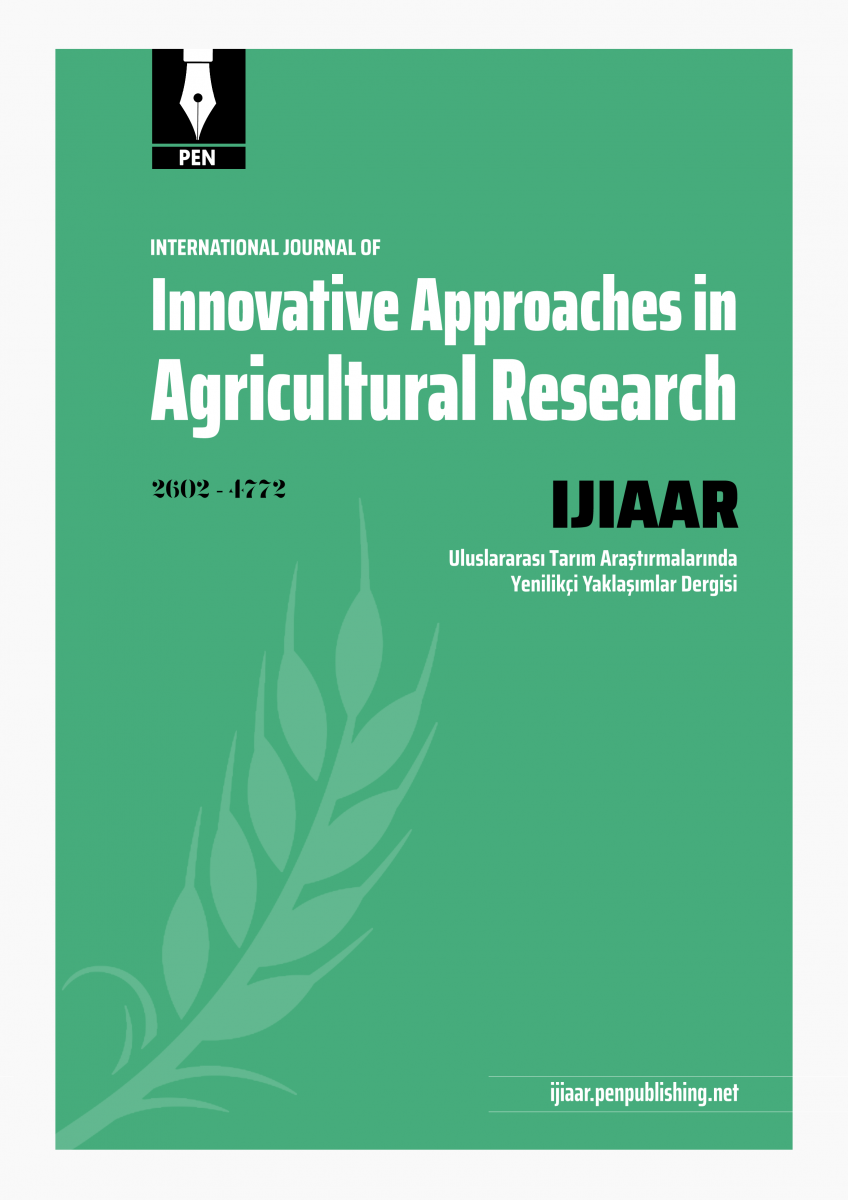- Aagaard, K., L. Jepsen and H. Andersen (1998). Raw milk quality in Denmark. Scand, Dairy Inform, 3, 22-24. [Google Scholar]
- Afif, A., M. Faid and M. Najimi (2008). Microbiological quality of raw milk produced in the Tadla region of Morocco. Reviews in Biology and Biotechnology. BioAlliance Canada-Morocco, 7, 2-7. [Google Scholar]
- AFNOR (1977). Determination of nitrogen for the purpose of calculating the crude protein content. AFNOR Edition, Paris, France. [Google Scholar]
- AFNOR (1985). Quality control of dairy products - physical and chemical analyses, 3rd edition (publishing): 107-121-125-167-251 (321 pages). [Google Scholar]
- Agabriel, C., J. B. Coulon, G. Brunschwig, C. Sibra and C. Nafidi (1995). Relationship between the quality of milk delivered and the characteristics of the farms INRA Prod. Anim., 8, 251-258. [Google Scholar]
- Aggad, H., F. Mahouz, Y. Ahmed Ammar and M. Kihal (2009). Evaluation of the hygienic quality of milk in western Algeria. Med. Vet. Rev., 160 (12), 590-595. [Google Scholar]
- Alais, C. and G. Linden (2004). Food biochemistry. 5th Edition Masson (Paris), 520 p., 162-164. [Google Scholar]
- Alais, C. (1984). Milk science. Principles of dairy techniques. 3rd edition, Advertising edition France. [Google Scholar]
- Ameur, A., K. Rahal and A. Bouyoucef (2011). Evaluation of the cleaning of refrigeration tanks on dairy farms in the Freha region (Algeria). Nature & Technology, 6, 80-84. [Google Scholar]
- Araba, A. (2006). Feeding of the dairy cow. Technology transfer in agriculture. Bulletin produced at the agronomic and veterinary institute Hassan II, Rabat. N°136. [Google Scholar]
- Bassbasi, M., A, Hirri and A. Oussama (2013). Physico-chemical characterization of raw milk in the Tadla-Kelaa region of Morocco: Application of the exploratory analysis. Int. J. Innov. Appl. Stud., 2 (4) 512-517. [Google Scholar]
- Bonfoh, B., A. Fané, N. A. Traoré, Z. Coulibaly, C. F. Simbé, O. Alfaroukh, J. Nicolet, Z. Farah and J. Zinsstag (2002). Microbiological quality of milk and dairy products sold in the hot season in the Bamako district of Mali. Bioterre, Rev. Inter.Sci. of life and earth, N ° special acts of the international symposium, center Switzerland. University Publishing of Ivory Coast, pp: 242-250 [Google Scholar]
- Bony, J., V. Contamin, M. Gousseff, J. Metais, E. Tillard, X. Juanes, V. Decruyenaere and J. B. Coulon (2005). Factors of variation of milk composition in Réunion. INRA Prod. Anim., 18, 255-263. [Google Scholar]
- Coulon, J., C. Hurtaud, R. Romond and R. Verite (1998). Factor of variation of the proportion of casein in cow's milk proteins. INRA Prod. Animal., 1, 299-310. [Google Scholar]
- Coulon, J. P. and B. Remond (1991). Responses of cow's milk production and composition to changes in nutrient intake. INRA Prod.Anim., 4, 49-56. [Google Scholar]
- Dagnelie, P. (1975). Theory and statistical methods. Edition: Flammarion, 378,113-135. [Google Scholar]
- Desmasures, N., F. Bazin and M. Guéguen (1997). Microbiological composition of raw milk in the Camembert region of Normandy, J. Appl. Microbiol., 83, 53-58. [Google Scholar]
- Faye, B. and G. Loiseau (2000). Sources of contamination in dairy value chains and example of quality approaches in: Food safety management in developing countries, CIRAD-FAO edition, 1-5. [Google Scholar]
- Gaursaude, J. (1985). Composition and physico-chemical property of milk. In: Milk and milk products, sheep cow, goat. Vol.1, Milk from the udder to the dairy, Luquet, F.M., Edition INRA, pp. 520-530. [Google Scholar]
- Ghazi, K., B. Guessas, A. Niar and K.I. Louacini (2010). Hygienic quality of cow milk, in various bovine breeds of Tiaret Area (Algeria). Asian J. Anim. Vet. Adv., 5(8), 592-596. [Google Scholar]
- Guetarni, D. (2006). Strategy for improving quality and quantity of raw milk in Algeria. Proc. Scientific days on dairy production. Tiaret, Algeria, pp: 26-43. [Google Scholar]
- Guiraud, J. (1998). Food Microbiology, DUNOD Edition, 79-102. [Google Scholar]
- Guiraud, J. P. and J. P. Rose (2004). Practice of food microbiology standards AFNOR, 300p. [Google Scholar]
- Hoden, A., J. B. Coulon and P. Faverdin (1988). Feeding cattle, sheep and goats. In: Jarrige, R. (Ed.), INRA, Paris, France, 135-158. [Google Scholar]
- Hogan, J. S., K. H. Hoblet, K. L. Smith, D. A. Todhunter, P. S. Schoenberger, W.D. Hueston, D. E. Pritchard, G. L. Bowman, L. E. Heider and B. L. Brockett (1988). Bacterial and somatic cell counts in bulk tank milk from nine well managed herds. J. Food Prot., 51, 930-934. [Google Scholar]
- Joffin, C. and J. N. Joffin (1999). Food microbiology. Collection biology and technique 5th edition, 174. [Google Scholar]
- JORA (1998). INTERIM Ministerial Order of 25 January 1998 (JORA) on the microbiological specifications of certain foods. Department of Commerce. JORA No. 35, 1998, Algeria. [Google Scholar]
- Kacimi El Hassani, S. (2013). Food dependence in Algeria: import of milk powder versus local production, what evolution? Mediterr. J. Soc. Sci., 4 (11), 152-158. [Google Scholar]
- Karimuribo, E. D., L. J. Kusiluka, R. H. Mdegela, A. M. Kapaga, C. Sindato and D.M. Kambarage (2005). Studies on mastitis, milk quality and health risks associated with consumption of mil from pastoral herds in Dodoma and Morogoro regions, Tanzania. J. Vet. Sci., 6, 213–221. [Google Scholar]
- Labioui, H., L. Elmoualdi, A. Benzakour, El Yachioui, E. Berny and M. Ouhssine (2009). Physicochemical and microbiological study of raw milks. Bull. Soc. Pharm. Bordeaux, 148, 7-16. [Google Scholar]
- Luquet, F. M. (1985). Milk and dairy products (cow, ewe, goat). Volume 1: Milks from the udder to the dairy. Technical and documentation Lavoisier, 217-261 [Google Scholar]
- Madani, T. and C. Mouffok (2008). Dairy production and breeding performance of Montbéliarde cows in the Algerian semi-arid region. Elev Review. Med.Vet. Country Trop., 61 (2), 97-107. [Google Scholar]
- Makhlouf, M., E. Montaigne and A. Tessa (2015). Algerian dairy policy: between food security and differential support for consumption. New Medit.,1, 12-23. [Google Scholar]
- Makhlouf, M., E. Etienne Montaigne (2017). Impact of the new Algerian dairy policy on the viability of dairy farms. New Medit, 1, 2-10. [Google Scholar]
- Mansour, L. M. and K. Abbas (2015). Typology of feeding strategies for dairy cattle in the semi-arid region of Sétif. Livest. Res. Rural Dev., 27, http://www.lrrd.org/lrrd27/5/abba27085.html. [Google Scholar]
- Mathieu, J. (1998). Initiation to the physicochemistry of milk. Technological Guides of LPNs. Edition Lavoisier Tec and Doc, Paris, 220 p. [Google Scholar]
- Maury, M. (1987). Medias and laboratory reagents. Microbiol. Immunol. Pasteur Diagnosis, pp: 727. [Google Scholar]
- Mennane, Z., M. Ouhssine, K. Khedid and M. Elyachioui (2007). Hygienic quality of raw cow’s milk feeding from waste in two regions in Morocco. Int. J. Agric. Biol., 9, 46-48. [Google Scholar]
- Michelle, V., A. Hauwuy and J. F. Chamba (2001). The microbial flora of raw cow milks: diversity and influence of the conditions of production. Milk, 81, 575-592. [Google Scholar]
- Ramet, J. P. (1985). The cheese dairy and the cheese varieties of the Mediterranean basin. FAO Animal Production and Health Study, 48. [Google Scholar]
- Schwartz, D. (1992). Statistical methods for use by physicians and biologists. Flammarion Edition, Paris, 306 p. [Google Scholar]
- Srairi, M. T., I. Hasni Alaoui, A. Hamama and B. Faye (2005). Relationship between breeding practice and overall quality of cow's milk in suburban barns in Morocco. Med. Rev. Vet., 156, 155-162. [Google Scholar]
- Srairi, M. T. and A. Hamama (2006). Overall quality of raw cow milk in Morocco concept, state of play and prospects for improvement. Technology transfer in agriculture. Bulletin made at the agronomic and veterinary institute Hassan II. Rabat, N 137. [Google Scholar]
- Stoll, W. (2002). Feeding of the dairy cow and composition of the milk. Federal Research Station for Animal Production. http/www.admin.ch/sar/2ap. N°8. [Google Scholar]
- Sutton, J. D. (1989). Altering milk composition by feeding. J. Dairy Sci., 72, 2801-2814. [Google Scholar]
|

